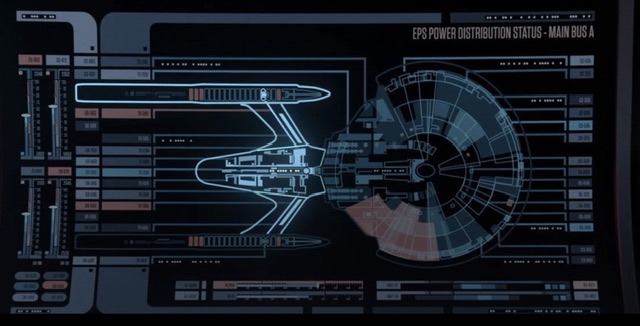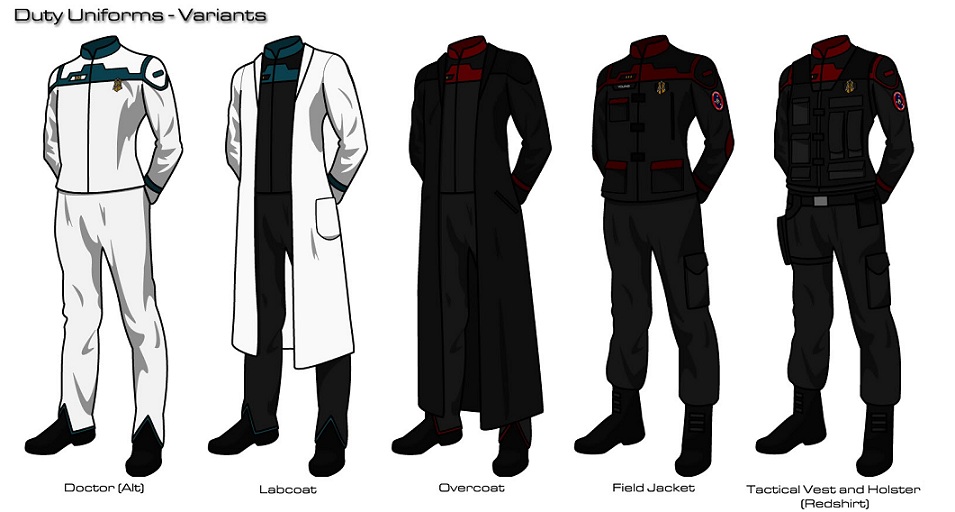The Sim

Overview
While the governments of the Khitomer Alliance were considered the victors of the Dominion War, no nation truly went unscathed. While many members of Starfleet Command wanted to focus on building larger, multifaceted craft to make up for Starfleet’s losses, Starfleet’s depletion from the Dominion War was more serious than any wanted to admit. This, coupled with the Romulan Relocation Effort and the attack upon the Utopia Planitia Fleet Yards in 2385, led the Starfleet Corps of Engineers to focus on producing smaller vessels to compensate for limited resources and a war weary pool of trained personnel. At the same time, the Federation Council called upon Starfleet to build a symbol to remind the galaxy of the traditions that made the Federation great.
Headquartered at the San Francisco Orbital Ship Yards on Earth, the Engineering Corps looked to the designs of previous generations to build Starfleet’s future. Thus, the Constitution III was born. Heir to the legacy of the Constitution and Constitution II Class, the Constitution III Class (or Neo-Constitution Class) was intended to be a return to the ideals of the Federation’s past. Designed by Starfleet to be the workhorse of the fleet, the Constitution III was designed to conduct exploratory missions, but also to support fleet operations when needed. While the ship was planned to be highly versatile and fill a variety of roles in the fleet, the new Constitution would have some deficiencies when compared to the more specialized craft used by Starfleet in that it lacks the advanced sensors or laboratories of dedicated science ships and the firepower of combat ships.
Capabilities
The Constitution III Class follows the traditional lines of its predecessors in the Constitution Class, closely replicating the design of the Constitution II Class of the late 23rd Century. The vessel features a saucer shaped primary hull and a cylindrical engineering section that feeds twin warp nacelles similar to those of the Sagan Class. The most striking feature of the Constitution III Class is its enhanced, albeit overpowered, Impulse Engines – which have been designed to cater to a close support envelope at sublight speeds. This modification allows the Constitution III to have improved handling in and around densely populated solar systems and provides members of this class with the highest sublight power to geometry ratio in Starfleet history. Sporting a new dilithium chamber capable of keeping the crystals stable at high warp speeds for longer periods of time, the Constitution III is one of the fastest vessels in Starfleet and can maintain a stable velocity of Warp 9.99.
An enhanced electro-plasma distribution network allows ships of the Constitution III Class to run equipment with high energy demands, like industrial replicators, with little loss on overall efficiency, making the Constitution III ideal for mercy missions or rapid evacuations. The Constitution III features three shuttlebays and is well suited for cargo and transportation missions due to its massive cargo holds, which frequently leads the vessel to being assigned to resupply planets, space stations and even other starships. Crew accommodations on the Constitution III are more modest than on comparable vessels of previous generations, with some crew cabins consisting of a single compartment. Outfitted with metaphasic shielding, the Constitution III's primary weapons are Narrow-Angle Phaser Beam Arrays, which sacrifice some if their fire arc in exchange for a stronger punch.
Refits and Variants
Through its lifetime two separate refit programs were implemented in an effort to improve the longevity of the Constitution III Class. The first generation of refits were designed to improve the vessel’s weapon systems after several members of the class were overwhelmed during encounters with more technologically sophisticated and hostile species. A second refit attempted to overcome the Constitution III’s deficits with scientific exploration, leading to portions of the Saucer Module to be reconfigured to house additional sensor equipment and laboratories at the expense of the already limited defensive suite.
Mission Profiles
Crisis and Emergency Response, Pathfinder and Reconnaissance Operations, Scientific and Survey Operations. Vessels of the Constitution III Class are highly sought after postings due to the legacy of the Constitution Class vessels that came before and their return to five-year missions.
Naming Conventions
Members of the Constitution III Class have names taken from many different naming conventions from throughout the Federation, but are commonly named after historic Federation vessels. In 2267, there were the original twelve Constitution-class starships in the fleet. These included the NCC-1700, the USS Constellation, the USS Defiant, the USS Enterprise NCC-1701, the USS Excalibur, the USS Exeter, the USS Hood, the USS Intrepid, USS Lexington, and the USS Potemkin.
Starfleet Uniforms

